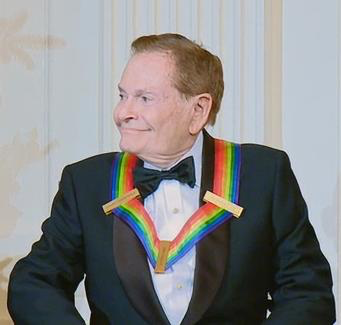Tony Award-winner Jerry Herman, composer of Mame, Hello, Dolly! and La Cage aux Folles, died last week. His first Broadway score was for the musical Milk and Honey, which told the story of Jewish widows traveling to Israel with hopes of finding husbands. Among the stars of Milk and Honey was Yiddish theatre legend Molly Picon, who had first appeared on stage in 1904 at the age of 6. When Milk and Honey was in previews in New Haven, Picon got a rousing round of applause following her rendition of the song Hymn to Hymie. The show’s director, Albert Marre, then suggested to Jerry Herman that they add Picon’s “trademark move” at the end of that song. Herman questioned what the move had to do with the song, to which Marre replied, “We’re a musical comedy, we can do what we want.” What was the 64-year-old Picon’s “move” that Marre and Herman added to the show?

Jerry_Herman_2010 by U.S. federal government is in the public domain.
A. She launched into a Tza’ad Temani, the traditional Yemenite dance steps often performed at Sephardic weddings.
B. She started shimmying and shaking her arms in the air, a dance move that she first performed in the 1936 movie Yidl Mitn Fidl. In the movie, Picon and her father are traveling musicians in Poland, and she dresses as a boy for safety, which becomes complicated when she falls in love with another of the musicians and performs that dance move. Picon’s dance was later copied by Jerome Robbins for Tevye’s If I Were a Rich Man choreography in Fiddler on the Roof.
C. Picon, who was the daughter of Polish immigrants, danced the Mazurka, which is a traditional up-tempo Polish dance common among Ashkenazic Jews.
D. Picon revived her famous “patsh-tants” moves that she first performed in the film Mamele in 1938. Patsh-tants means clap dance, and refers to a style of dancing with hand clapping that was common at Jewish weddings in Eastern Europe.
E. She did a somersault, a move she had done since she was a rambunctious young girl dancing around her living room.
